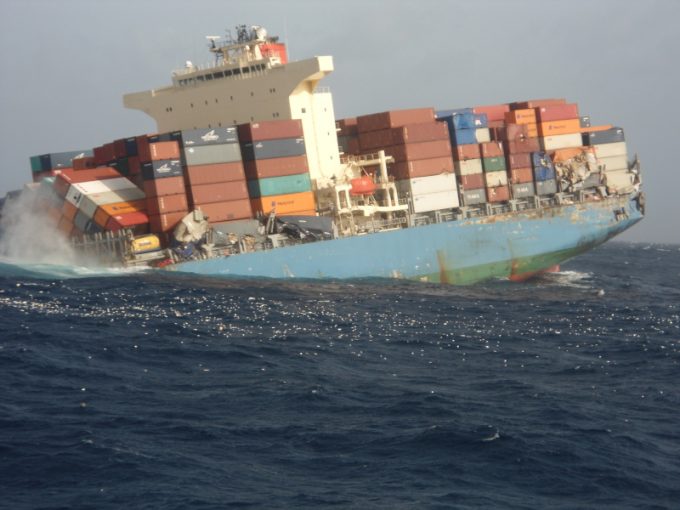Iranian troops seize MSC box ship while Somali pirates net $5m ransom for bulker
As instability rises in the Middle East, the Israel-Palestine war now threatening to encompass Iran, ...

Japanese classification society ClassNK is claiming a “world-first” breakthrough finding in the required crack arrest toughness of steel plates used in the construction of ultra-large container vessels (ULCVs).
In response to the huge increases in containership sizes over the past decade and the need to ensure their structural reliability, in January 2013 the International Association of Classification Societies (IACS) released its “Unified Requirements” for the use of extremely thick steel plates, outlining a minimum brittle crack arrest toughness value of 6,000 N/mm 3/2 at -10C– the minimum design temperature for commercial vessels.
However, the IACS requirements only relate to steel plates with a thickness of 80mm or less, with the value for brittle crack arrest of steel plates in excess of this to be “specifically agreed” with each classification society.
ClassNK carried out extensive verification tests in a joint research and development project with the Japan Welding Engineering Society (JWES) on 100mm steel plates, used in the construction of 18,000 teu-plus vessels, on ultra-large-scale test specimens simulating the actual construction of the hatch side coaming and upper deck of an ULCV.
It concluded that that the minimum brittle crack arrest toughness for 100mm steel plates used in the construction of the ULCVs must be 8,000 N/mm 3/2 at -10C.
Based on these findings, ClassNK said that “in principle” it would now require this minimum for its future ship classification approval of ULCVs.
It added: “Furthermore, to enable the smooth use of extremely thick steel plates in the industry, it will endeavour to properly reflect the new finding onto the IACS Unified Requirements.”
The exponential growth in the size of containerships in the past ten years requires a constant review of classification minimum requirements and the findings of the ClassNK investigation is significant for the industry.
The total loss of the 8,100 teu MOL Comfort off the coast of Yemen in June 2013, is the biggest containership casualty in the industry’s 50-year history.
The ship, classed by ClassNK and carrying 4,382 containers, broke its back in heavy weather while in transit from Asia to Europe, sinking in 4,000 metres of water.
The final report from ClassNK concluded that a fracture originated in the bottom of the shell plates of number six cargo hold and progressed up the side shell plating of the ship.
Immediately after the casualty, MOL Comfort’s six sister ships were inspected and found to have buckling deformations on their bottom shell plates, in the centre of the midship area. They were withdrawn from service and dry-docked to have their hulls reinforced.
Following the MOL Comfort sinking, IACS introduced a number of Unified Requirement revisions for its members on minimum structural strength and maximum hull stress levels for ships with a length of 290 metres or more.
Comment on this article
Dave McCrae
July 30, 2016 at 12:20 amWe encountered this problem in 1976 in Perry Nuclear Plant Emergency Cooling Water Intake Structures. The crack initiation was traced to weld joint design, and lamellar tearing within the plate. 🙂